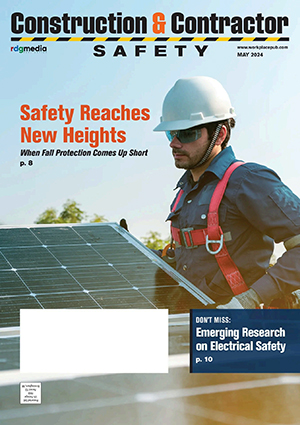Effective Safety Inspection Program Based on Training, Observation, Interaction
Judie Smithers, Editor, J. J. Keller & Associates
 Managers and executives can show their commitment to safety by spending time with employees during periodic walk-around inspections.
Managers and executives can show their commitment to safety by spending time with employees during periodic walk-around inspections.
During the inspections, managers and executives will see first-hand how hazards are found and fixed. They’ll be able to ask employees about the safety measures they take for their jobs, and how they report hazards, near-misses, and injuries. And, they can ask workers what they think about the training they’ve received.
A good safety inspection program includes planning, execution and follow-up.
Planning
It’s crucial for managers and executives to prepare for their walk-arounds. Planning will help the inspection go smoothly, and it will help ensure they observe the procedures they want to see and ask the questions they want to ask.
 To plan ahead, leaders should:
To plan ahead, leaders should:
- Review past inspection reports to familiarize themselves with previously identified hazards and control measures.
- Use the inspection reports, along with injury and workers’ compensation reports and incident and near-miss investigation reports, to identify the most hazardous operations in the facility.
- Consult with supervisors and safety committee representatives to find out current safety issues.
- Acquire and learn how to use the proper personal protective equipment (PPE) needed in the areas being inspected.
- Get the same training on how to identify hazards that supervisors and workers get.
- Review production schedules to ensure the inspection is conducted when they’ll see the most hazardous operations.
Execution
 During the walk-around, leaders should:
During the walk-around, leaders should:
- Wear the appropriate PPE.
- Keep the inspection group small to facilitate communication.
- Talk to workers at their workstations. Workers are likely to know the most about the hazards and safety issues in their jobs. Inspectors can tap into that knowledge. They should put workers at ease and make them comfortable when they talk.
- Reassure workers that the inspection is being done to find and fix hazards, not to place blame.
- Encourage conversation by asking open-ended questions such as:
- What is the most hazardous task in your job? What do you recommend to eliminate those hazards?
- If you have been injured in your job, what was the injury and how did it happen? What was done to make your job safer?
- How would you report an injury, hazard or near-miss?
- Look for easily observable hazards first, such as:
- Tripping hazards,
- Blocked exits,
- Frayed/exposed electrical wires,
- Missing machine guards,
- Poor housekeeping, and
- Poorly maintained equipment.
- Look for property damage, such as walls or doors damaged by equipment or forklift traffic. Such damage may indicate a potential for future worker injuries.
- Seek out and talk to the most recently hired workers to get their fresh perspectives and insights on the safety program.
- Observe workers as they perform their job. For example, do they lift heavy objects? Do they stand/sit in awkward postures? Are they performing repetitive motions? If so, the inspectors should take notes and photos. If their job involves handling chemicals or exposure to excessive noise and/or heat, a more detailed evaluation by a safety professional may be in order.
- Brainstorm with workers to try to find solutions for hazards as they’re identified during the inspection.
- Make and prioritize a list of hazards that must be addressed
Follow-up
Failure to follow up can often stifle worker participation and enthusiasm, which can be hard to regain.
Very soon after the inspection, the managers and executives should prepare an abatement plan containing:
- A list of the hazards found,
- Corrective actions needed,
- Assignments of personnel responsible for the corrective actions, and
- A reasonable timeline for implementation.
Some complex hazards may require further evaluation, study or engineering work to design and implement appropriate controls. Describe briefly how the hazards will be addressed and identify interim controls that will be used while more permanent measures are developed.
Share the abatement plan with managers, supervisors, safety committee members and workers. Track progress by sharing or posting periodic updates to the plan. Ensure all corrective actions are implemented in a timely fashion. WMHS
About the Author:
Judie Smithers is an editor at J. J. Keller & Associates, a nationally recognized compliance resource company that offers products and services to address the range of responsibilities held by business professionals. Smithers’ subject matter expertise covers safety training, lockout/tagout, permit-required confined spaces, hearing conservation, exposure monitoring, personal protective equipment, asbestos, lead, radiation, and illumination. She is an authorized OSHA General Industry Outreach Trainer. She is the author of J. J. Keller’s 1910 OSHA Guide, OSHA for Transportation guidance manual, OSHA Safety Training Handbook, and OSHA Safety Training newsletter. Prior to her career at J. J. Keller, Smithers was the health and safety information coordinator for an industrial company, where she developed and implemented the firm’s safety programs, oversaw workers’ compensation claims, provided safety training, managed compliance with EPA’s community right-to-know and hazardous waste disposal requirements, and advised on hazardous materials requirements. For more information, visit www.jjkeller.com/osha and www.jjkellerlibrary.com.



